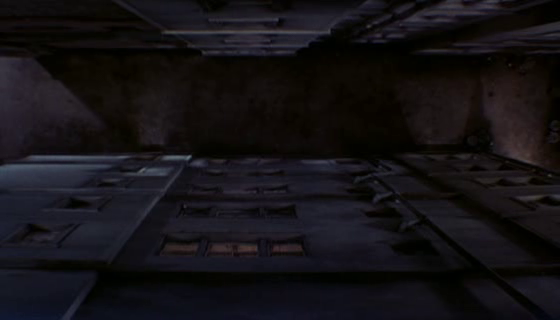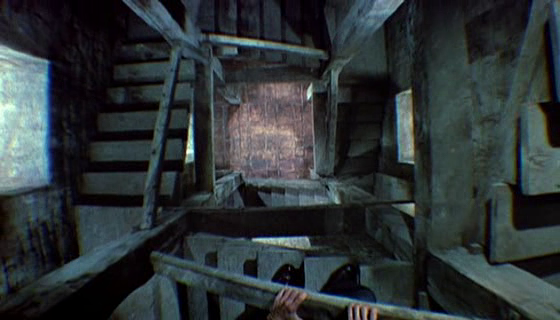We can define Vertigo shot (also known as dolly zoom) as a movement of camera on dolly while changing the focal length of the lens. In other words, moving the camera physically away or towards the subject (“dollying”) while zooming in or out (changing the focal length of lens).
I made a short animation, which hopefully clearly shows the difference between:
- Change in focal length (zooming in)
- moving the camera physically away from the subject (“dollying out”) and
- what happens, when these two techniques are combined (=dolly zoom).
When “dollying out” and zooming in, the size of red figure stays relatively the same, but the background changes dramatically. This is very unsettling, because our eyes are not used to this. The reason for that is that with our eyes, we can perform only the dolly part of the move, that is, physically moving away or towards the subject, but we can’t zoom with our eyes (wished we could 🙂 ).
Anyway, this technique was firstly used, I believe, by Alfred Hitchcock in his film Vertigo. And it was used in such a way, that it helps to tell the story. The movie starts by a chase on roof tops, and it is here, when we learn, that one of the main characters, detective Ferguson (James Stewart), suffers from acrophobia (fear of heights). Here is the scene:
He jumps from one roof to another,

but slippers and almost falls down.

When he looks down, he gets dizzy/vertigo. Here uses Alfred Hitchcock the dolly zoom technique for the first time in the movie – he shows detective Ferguson’s fear of heights and how he feels.


The foreground stays relatively the same (top and bottom of the frame), but the background (middle of the frame – ground) changes dramatically.
The dolly zoom technique gets used again in a scene, where detective Ferguson is chasing Madeleine (Kim Novak) on old wood staircase.

In the middle of the staircase, he looks down an gets dizzy/vertigo again.


Again, the foreground (his hands) stays relatively the same in size, while the background (floor of the tower) changes dramatically in size.
When I saw the movie for the first time, I didn’t know anything about zooming, or “dollying”, but I remember, that I could feel his (detective Ferguson’s) fear of heights in this scene. Watch the whole scene in the video below:
Vertigo is, to my knowledge, the first movie where this technique was used (as a storytelling device), but it is certainly not the only one. As I became aware of this technique, I started noticing it in other movies as well. It is usually used to:
- show character’s physical/mental condition
- depict change in her life, or
- when she realizes something
- when she finds herself in danger
Do you know about any other examples? Let me know down in the comments. 😉